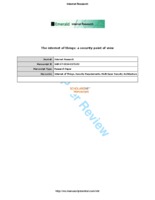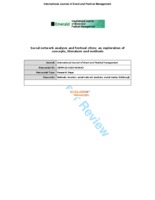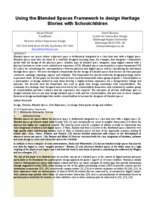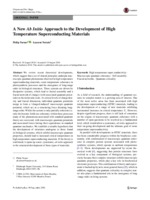Repository@Napier
Increased Hospital-Based Physical Rehabilitation and Information Provision After Intensive Care Unit Discharge: The RECOVER Randomized Clinical Trial
 Get PDF
Get PDFImportance: critical illness results in disability and reduced health-related quality of life (HRQOL), but the optimum timing and components of rehabilitation are uncertain.Objective: to evaluate the effect of increasing physical and nutritional rehabilitation plus information delivered during the post–intensive care unit (ICU) acute hospital stay by dedicated rehabilitation assistants on subsequent mobility, HRQOL, and prevalent disabilities.Design, Setting, and Participants: a parallel group, randomized clinical trial with blinded outcome assessment at 2 hospitals in Edinburgh, Scotland, of 240 patients discharged from the ICU between December 1, 2010, and January 31, 2013, who required at least 48 hours of mechanical ventilation. Analysis for the primary outcome and other 3-month outcomes was performed between June and August 2013; for the 6- and 12-month outcomes and the health economic evaluation, between March and April 2014.Interventions: during the post-ICU hospital stay, both groups received physiotherapy and dietetic, occupational, and speech/language therapy, but patients in the intervention group received rehabilitation that typically increased the frequency of mobility and exercise therapies 2- to 3-fold, increased dietetic assessment and treatment, used individualized goal setting, and provided greater illness-specific information. Intervention group therapy was coordinated and delivered by a dedicated rehabilitation practitioner.Main Outcomes and Measures: the Rivermead Mobility Index (RMI) (range 0-15) at 3 months; higher scores indicate greater mobility. Secondary outcomes included HRQOL, psychological outcomes, self-reported symptoms, patient experience, and cost-effectiveness during a 12-month follow-up (completed in February 2014).Results: median RMI at randomization was 3 (interquartile range [IQR], 1-6) and at 3 months was 13 (IQR, 10-14) for the intervention and usual care groups (mean difference, −0.2 [95% CI, −1.3 to 0.9; P = .71]). The HRQOL scores were unchanged by the intervention (mean difference in the Physical Component Summary score, −0.1 [95% CI, −3.3 to 3.1; P = .96]; and in the Mental Component Summary score, 0.2 [95% CI, −3.4 to 3.8; P = .91]). No differences were found for self-reported symptoms of fatigue, pain, appetite, joint stiffness, or breathlessness. Levels of anxiety, depression, and posttraumatic stress were similar, as were hand grip strength and the timed Up & Go test. No differences were found at the 6- or 12-month follow-up for any outcome measures. However, patients in the intervention group reported greater satisfaction with physiotherapy, nutritional support, coordination of care, and information provision.Conclusions and Relevance: post-ICU hospital-based rehabilitation, including increased physical and nutritional therapy plus information provision, did not improve physical recovery or HRQOL, but improved patient satisfaction with many aspects of recovery
Improving the thermal performance of ‘hard-to-treat’ historic buildings in Edinburgh’s new town.
 Get PDF
Get PDFThis paper documents an innovative partnership project between Historic Scotland, the Scottish Energy Centre at Edinburgh Napier University and Castle Rock Edinvar Housing Association in which five Category B Listed, traditional pre-1919, solid wall ‘hard-to-treat’ residential tenement properties located within Edinburgh’s historic UNESCO World Heritage site each received energy efficient upgrades to walls and windows. A variety of measures were tested, achieving significant reductions in fabric heat loss without impacting upon the character and appearance of the buildings.The project is significant in that the energy-efficient upgrades all met with strict conservation requirements on alterations to Listed Buildings and have the potential to be replicated in similar properties throughout Scotland. The project won the award for best refurbishment project at the Carbon Trust’s Low Carbon Building Awards in 2012.All of the properties featured in this study are occupied by tenants within the social-rented sector who prior to the study had indicated some thermal discomfort due to poor window conditions and high heat loss through walls causing increase fuel consumption. The occupants all remained in their homes during the refurbishment activities
The Internet of Things: a security point of view.
 Get PDF
Get PDFPurpose-- To provide an in-depth overview of the security requirements and challenges for Internet of Things (IoT) and discuss security solutions for various enabling technologies and implications to various applications.Design/methodology/approach-- Security requirements and solutions are analyzed based on a four-layer framework of IoT on sensing layer, network layer, service layer, and application layer. The cross-layer threats are analyzed followed by the security discussion for the enabling technologies including identification and tracking technologies, WSN and RFID, communication, networks, and service management.Finding-- IoT calls for new security infrastructure based on the new technical standards. As a consequence, new security design for IoT shall pay attention to these new standards. Security at both the physical devices and service-applications is critical to the operation of IoT, which is indispensable for the success of IoT. Open problems remain in a number of areas, such as security and privacy protection, network protocols, standardisation, identity management, trusted architecture, etc.Practical implications-- The implications to various applications including SCADA, enterprise systems, social IoT are discussed. The paper will serve as a starting point for future IoT security design and management. The security strategies for IoT should be carefully designed by managing the trade-offs among security, privacy, and utility to provide security in multi-layer architecture of IoT.Originality/value-- The paper synthesizes the current security requirements for IoT and provides a clear framework of security infrastructure based on four layers. Accordingly, the security requirements and potential threats in the four-layer architecture are provided in terms of general devices security, communication security, network security, and application security
Social network analysis and festival cities: an exploration of concepts, literature and methods
 Get PDF
Get PDFSocial network analysis (SNA) is an under-utilised framework for research into festivals and events. This paper reflects upon the history of SNA, and explores its key concepts, in order that they might be applied to festivals and their environments. Secondary material from the literature of SNA, tourism studies and the festival industry underpins the paper. The analysis argues that festival cities offer dynamic environments in which to investigate the workings of social networks. The importance of such networks has long been recognised within the industry, yet there is scant reflection of this in the event studies literature. Uses of SNA in tourism studies publications offer some precedents. This paper emphasises the importance of relationships between people in a festival economy, complementing and perhaps undermining stakeholder analyses. A research method is proposed, suitable for application across a diverse range of festivals and events
Using the blended spaces framework to design heritage stories with schoolchildren.
 Get PDF
Get PDFBlended spaces are spaces where a physical space is deliberately integrated in a close-knit way with a digital space. Blended spaces may take the form of a carefully designed meeting room, for example, that integrates collaborative media with the design of the physical space. Another type of blended space integrates some digital content with a physical location to create a new, unified user experience (UX). Blended spaces aim to produce a more harmonized UX of a place by considering the correspondences between physical and digital spaces and by considering the movement through these spaces. We have developed a framework for the design of blended spaces that focuses on four principal constructs; ontology, topology, agency and volatility. This framework has proved useful for designing heritage stories in previous work. In this paper we describe how we have used the framework with a group of grade 5 schoolchildren as a participative co-design method to help them develop a digital tourism experience for a living-history village and museum. We describe how the framework was used to guide four design workshops with schoolchildren. The evaluation of a heritage story designed and acted out by the schoolchildren themselves and evaluated by another group of schoolchildren provides evidence that the experience was enjoyed. The outcomes of all four workshops gave us insights towards how to not only design blended spaces with and for schoolchildren, but also how to teach complex theoretical design methodologies that enable schoolchildren to become the designers of blended spaces
Introduction - Screening Women’s Imprisonment: Agency and Exploitation in Orange is the New Black.
 Get PDF
Get PDFIntroduction to the special edition of Television & New Media
Function and Regulation of Yeast Ribonucleotide Reductase: Cell Cycle, Genotoxic Stress, and Iron Bioavailability
 Get PDF
Get PDFAll eukaryotic organisms require an adequate, balanced concentration of deoxyribonucleoside triphosphates (dNTPs) in order to assure accurate DNA replication and repair, and to maintain genomic integrity. The rate‑limiting step in dNTP synthesis is catalyzed by ribonucleotide reductase (RNR), an essential enzyme mediating the reduction of ribonucleotides to desoxyribonucleotides, thereby providing the building blocks required for DNA synthesis. Consistent with its important role in cell proliferation, a significant increase in RNR activity has been associated with tumor cells and resistance to chemotherapy. Indeed, since the utilization of hydroxyurea in the 70s to the current development of sophisticated RNR inhibitors, RNR as been used as an important target for the chemotherapeutic treat‑ ment of numerous cancer types. [1] Therefore, understanding the molecular mechanisms that cells utilize to regulate RNR function in response to different stresses is critical for the development of new and efficient anticancer therapies. In this review, we focus on the yeast S. cerevisiae as a eukaryotic model to advance in our understanding of mechanisms regulating the function of eukaryotic RNRs during cell cycle progress and in response to environmental cues, including genotoxic stress and low iron bioavailability. RNR structure, assembly, and allosteric regulation In eukaryotes, class Ia RNRs are oxygen‑dependent enzymes composed of a large R1 (α 2) and a small R2 (β 2 or ββ′) subunit. The R1 subunit contains the catalytic site and two allosteric effector binding sites that Review Article Ribonucleotide reductases (RNRs) are essential enzymes that catalyze the reduction of ribonucleotides to desoxyribonucleotides, thereby providing the building blocks required for de novo DNA biosynthesis. The RNR function is tightly regulated because an unbalanced or excessive supply of deoxyribonucleoside triphosphates (dNTPs) dramatically increases the mutation rates during DNA replication and repair that can lead to cell death or genetic anomalies. In this review, we focus on Saccharomyces cerevisiae class Ia RNR as a model to understand the different mechanisms controlling RNR function and regulation in eukaryotes. Many studies have contributed to our current understanding of RNR allosteric regulation and, more recently, to its link to RNR oligomerization. Cells have developed additional mechanisms that restrict RNR activity to particular periods when dNTPs are necessary, such as the S phase or upon genotoxic stress. These regulatory strategies include the transcriptional control of the RNR gene expression, inhibition of RNR catalytic activity, and the subcellular redistribution of RNR subunits. Despite class Ia RNRs requiring iron as an essential cofactor for catalysis, little is known about RNR function regulation depending on iron bioavailability. Recent studies into yeast have deciphered novel strategies for the delivery of iron to RNR and for its regulation in response to iron deficiency. Taken together, these studies open up new possibilities to explore in order to limit uncontrolled tumor cell proliferation via RNR
A New Ab Initio Approach to the Development of High Temperature Superconducting Materials
 Get PDF
Get PDFWe review recent theoretical developments, which suggest that a set of shared principles underpin macroscopic quantum phenomena observed in high temperature superconducting materials, room temperature coherence in photosynthetic processes and the emergence of long-range order in biological structures. These systems are driven by dissipative systems, which lead to fractal assembly and a fractal network of charges (with associated quantum potentials) at the molecular scale. At critical levels of charge density and fractal dimension, individual quantum potentials merge to form a ‘charged-induced’ macroscopic quantum potential, which act as a structuring force dictating long-range order. Whilst the system is only partially coherent (i.e. only the bosonic fields are coherent), within these processes many of the phenomena associated with standard quantum theory are recovered, with macroscopic quantum potentials and associated forces having their equivalence in standard quantum mechanics. We establish a testable hypothesis that the development of structures analogous to those found in biological systems, which exhibit macroscopic quantum properties, should lead to increased critical temperatures in high temperature superconducting materials. If the theory is confirmed, it opens up a new, systematic, ab initio approach to the structural development of these types of materials
Transcriptional analysis of in vitro expression patterns of chlamydophila abortus polymorphic outer membrane proteins during the chlamydial developmental cycle.
 Get PDF
Get PDFChlamydophila abortus is the aetiological agent of ovine enzootic abortion. Sequencing, annotation and comparative analysis of the genome of C. abortus strain S26/3 has revealed variation in theloci encoding the polymorphic membrane proteins (Pmps). These Pmps resemble autotransporter proteins of the type V secretion system, suggesting an important role in chlamydial pathogenesis. The purpose of this study was to characterise the transcriptional expression patterns of this family during the developmental cycle of C. abortus. McCoy cells were infected with C. abortus and analysed for pmp mRNA expression over a 72 h period. Few pmp transcripts were detected in the early stages of the developmental cycle. Peakexpression occurred at 48 h post-infection (p.i.) other than for pmp5E, where it was observed at 24 h p.i. Overall, expression of pmps 5E, 18D and 10G were found to be 40 to 100-fold higher than the lowest expressing pmps (6H, 13G and 15G) at 24 h p.i., while pmps 18D and 17G were 14 to 16-fold higher than the lowest (11G, 14G and 15G) at 48 h. Levels of expression for all the other pmp genes were below one copy per genome at any time point. The expression of all the pmps reduced to near base-line levels by 60 hp.i. These results demonstrate that pmp expression in C. abortus is mid to late cycle, consistent with conversion of the reticulate body to the elementary body. The low level of pmp transcription may beindicative of heterogeneity in expression, suggesting a possible role for some of the Pmps in antigenic variation and chlamydial pathogenesis
Reducing patient delay with symptoms of acute coronary syndrome: a research protocol for a systematic review of previous interventions to investigate which behaviour change techniques are associated with effective interventions
 Get PDF
Get PDFIntroduction Delay to presentation with symptoms of acute coronary syndrome (ACS) is common meaning many fail to achieve optimal benefit from treatments. Interventions have had variable success in reducing delay. Evidence suggests inclusion of behaviour change techniques (BCTs) may improve effectiveness of interventions but this has not yet been systematically evaluated. Data from other time-critical conditions may be relevant.Methods and analysis A systematic review will be undertaken to identify which BCTs are associated with effective interventions to reduce patient delay (or prompt rapid help-seeking) among people with time-critical conditions (eg, chest pain, ACS, lumps, stroke, cancer and meningitis). A systematic search of a wide range of databases (including Cochrane Library, MEDLINE, EMBASE, CINAHL, PsycInfo) and grey literature will be undertaken to identify all relevant intervention studies (randomised controlled trials, controlled clinical trials and cohort studies). Two independent reviewers will screen abstracts to identify relevant studies, apply inclusion criteria to full papers, assess methodological quality and extract data.Primary outcome measure Change in patient decision time BCTs reported in each of the included studies will be categorised and presented according to the latest reliable taxonomy. Results of included studies will be synthesised, exploring relationships between inclusion of each BCT and effectiveness of the overall intervention. Where possible, means and SDs for differences in delay time will be calculated and combined within meta-analyses to derive a standardised mean difference and 95% CI. Analysis of (1) all time-critical and (2) ACS-only interventions will be undertaken